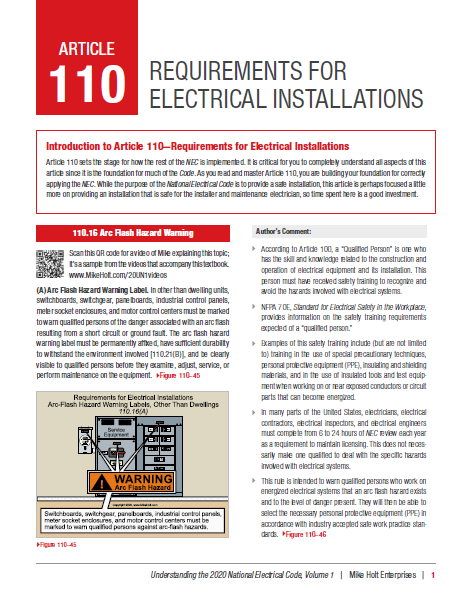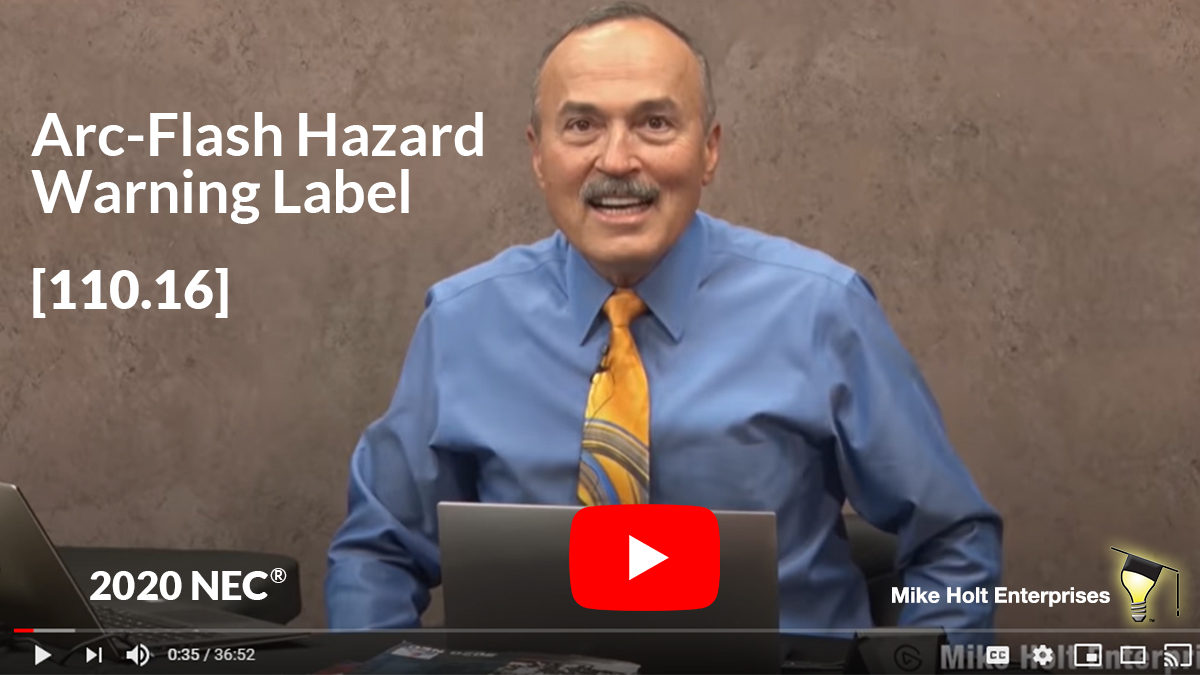|
Keeping up with the requirements of the Code should be the goal of
everyone involved in electrical safety. Following is what I feel is an
important rule in the 2020 NEC®, complete with
graphics and a video. I encourage you to use it as a training resource for
your organization, and share it with your colleagues.

|
Arc-Flash Hazard Warning [110.16] |
The content below is extracted from
Mike Holt's Understanding the National Electrical Code, Volume
1, based on the 2020 NEC.
| |
From the very beginning of the National Electrical Code its intentions are made clear, the purpose of this Code is the practical safeguarding of persons and property from hazards arising from the use of electricity [90.1(A)]. Article 110 goes a step further and sets the stage for how the rest of the NEC is implemented and is a bit more focused on ensuring that electrical installations are safe for the installer and service or maintenance electrician.
Arc-flash hazard warning [110.16] and the proper labeling of electrical equipment [110.16(A)] is at the pinnacle of ensuring personal safety. Do you know what equipment needs to be labeled or what information needs to be on this labelling? How about the proper personal protective gear to be worn when servicing electrical equipment?
Maintaining electrical safety in the field should be all of our number one focus so I implore you to read the attached text and make time to watch this video clip extracted from our Understanding the National Electrical Code Volume 1 based on the 2020 NEC as myself and a panel of experts, explain the requirements pertaining to arc-flash warning.
 Click here or on the thumbnail to the left to view or download the PDF of this Article to follow as you watch the video. Click here or on the thumbnail to the left to view or download the PDF of this Article to follow as you watch the video.
|

|
|
Click on the image above to watch the video
|
|
We'd
love to hear from you about this series, and the ways you're using it.
Send us your comments and feedback by clicking on Post a Comment
below. Look out for the next part in this series a month from now, and
please share with your colleagues.
This content is extracted from Mike Holt's Illustrated Guide to
Understanding the National Electrical Code, Volume 1, based on the
2020 NEC Program.
 |
Learn More...
Get Your Copy of Mike's
Understanding the NEC Complete Library
(4 books | 13 DVDs | 1
online quiz)


For further information
about this or other products please call us at
888.632.2633
We look forward to helping you
|

|
|
|
|

